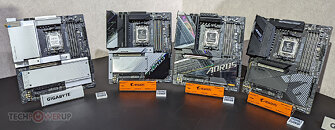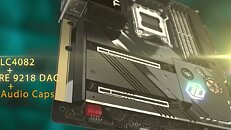
AMD's B650E Chipset Confirmed in Leaked List of ASRock AM5 Motherboards
Although AMD has not as yet announced its B650E chipset, rumour about such a chipset started before Computex. To date, no specific motherboard models have been mentioned by model name, but courtesy of Videocardz, we now have a list of several upcoming models from ASRock. The company has already announced its X670E range of motherboards, which consists of five models, of which four can already be seen on the ASRock website. ASRock appears to be planning five B650E boards, plus another six B650 SKU's. The company also appears to be the OEM for NZXT's second AMD motherboard, which appears to be called the N7-B65XT, which might also be a B650E based board.
Unfortunately we don't know any of the technical details about the upcoming B650/B650E boards from ASRock, but the model names give away that two of the five B650E boards will be Mini-ITX boards. It doesn't look like ASRock will be offering a high-end B650E model, but at least there will be an upper mid-range Steel Legend board. ASRock will also have a couple of mATX B650 boards, one should be a more gaming focused mid-range model, with the other being what appears to be a fairly basic model. One peculiar addition is a B650 SKU with the prefix LiveMixer, which is a new series from ASRock as far as we're aware. ASRock doesn't appear to be offering any X670 motherboards at all, at least not based on the current information.
Unfortunately we don't know any of the technical details about the upcoming B650/B650E boards from ASRock, but the model names give away that two of the five B650E boards will be Mini-ITX boards. It doesn't look like ASRock will be offering a high-end B650E model, but at least there will be an upper mid-range Steel Legend board. ASRock will also have a couple of mATX B650 boards, one should be a more gaming focused mid-range model, with the other being what appears to be a fairly basic model. One peculiar addition is a B650 SKU with the prefix LiveMixer, which is a new series from ASRock as far as we're aware. ASRock doesn't appear to be offering any X670 motherboards at all, at least not based on the current information.
































































